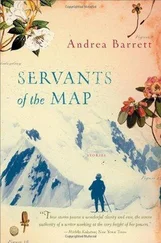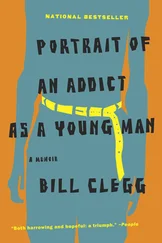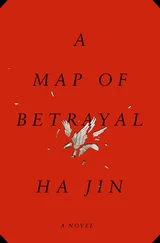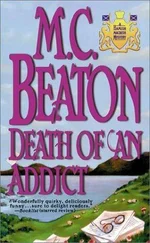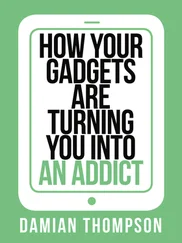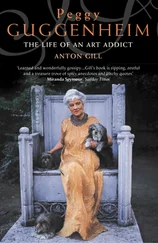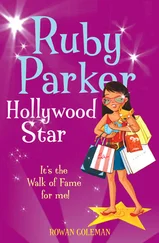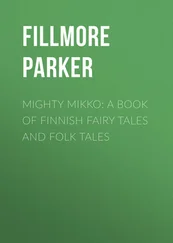In fact, as a nation, we’re obsessed with this map, more so than it perhaps deserves. Don’t get me wrong; it’s good, very good indeed, even if it’s not been quite right ever since 1991, when they dropped Bank station down a bit to merge with Monument and the new Docklands Light Railway extension. Not only did this consign to the bin the legendary  ‘escalator link’ between Bank and Monument, it committed the unpardonable sin of kinking the hitherto ruler-straight Central Line, which used to shoot from Ealing to Mile End, right along Oxford Street, like a bright red harpoon, before veering sharply north into Essex. At least, I suppose, it’s saved generations of inquisitive twelve-year-olds from the crushing anti-climax that I experienced when, on a family trip to London, I peeled off to go and investigate the ‘escalator link’ at Bank-Monument, something that had long intrigued me on the map. Imagining some futuristic subterranean world of travelators and quite possibly a teleportation pod or two, I was cruelly disappointed to find instead a long, dank corridor and a small, clanking escalator.
‘escalator link’ between Bank and Monument, it committed the unpardonable sin of kinking the hitherto ruler-straight Central Line, which used to shoot from Ealing to Mile End, right along Oxford Street, like a bright red harpoon, before veering sharply north into Essex. At least, I suppose, it’s saved generations of inquisitive twelve-year-olds from the crushing anti-climax that I experienced when, on a family trip to London, I peeled off to go and investigate the ‘escalator link’ at Bank-Monument, something that had long intrigued me on the map. Imagining some futuristic subterranean world of travelators and quite possibly a teleportation pod or two, I was cruelly disappointed to find instead a long, dank corridor and a small, clanking escalator.
Woe betide anyone whose adoration of Harry Beck’s tube map encourages them to attempt any kind of homage to it. In 2006, a self-confessed tube geek produced a quite inspired version of his own, each station faithfully rendered into an accurate anagram. Some were strangely apposite: Crux For Disco (Oxford Circus), Sad Empath (Hampstead), Written Mess (Westminster), Swearword & Ethanol (Harrow & Wealdstone) and the faintly creepy Shown Kitten (Kentish Town). Some were plain daft or bawdily Chaucerian: A Retard Cottonmouth (Tottenham Court Road), Pelmet (Temple), Burst Racoon (Barons Court), This Hungry & Boiling (Highbury & Islington), Wifely Stench (East Finchley) and Queer Spank (Queens Park). His map lit up the internet, getting over 30,000 hits in the first few days. And then the lawyers muscled in. If you Google it, you will find it, but only after coming across numerous pages telling you: ‘Content removed at the request of Healeys Solicitors acting on behalf of Transport for London and Transport Trading Ltd.’
Transport for London, whose predecessors paid Harry Beck just ten guineas for his original work, have been more than happy to license the tube map for an unholy array of tacky souvenirs. The anagram map’s creator has publicly stated that he doesn’t want any payment for it, but he wants it to be freely distributed. The idea has been picked up by artists the world over for their own transport systems. But still TfL are attempting to excise the map from cyberspace, a task only marginally less futile, and impossible, than trying to push toothpaste back into the tube. The map is a wonderful work of art: humorous, striking, colourful, beautiful. It makes Simon Patterson’s much-lauded, Turner Prize-nominated Great Bear , a Beck map where the stations are replaced with the names of artists, writers and composers, look very limp indeed. Patterson’s original was bought by the Tate, and limited prints have been snapped up for tens of thousands, by Charles Saatchi among others. It has made an awful lot of money, with full support from TfL. But then they do get 50 per cent of the proceeds, which—on the bright side—at least means that not all of their lawyers’ fees to pursue pointless causes have to come from the money you paid for your Travelcard.
It’s no coincidence that the two most lionised British maps, each dripping with myth and adoration, subjects of a glut of books, blogs and websites, are Harry Beck’s tube map and Phyllis Pearsall’s London A-Z (on which, more later). Despite the shrill claims of cities like Birmingham and Manchester, London remains our only true metropolis, effortlessly swatting away the pretensions of its minions. These two iconic maps are the fine line that separates experiencing the capital as either a cosmopolitan labyrinth of untold possibility or a coruscating pit of hell. Their overblown status in the story of our national cartography corresponds to the status of the city itself: if it happened in London, even if only in London, it is per se of nationwide significance. Although such self-regard drives us all mad in ‘the provinces’, we wouldn’t have it any other way, for who wants a capital city without a cocky swagger in its step?
There are many rather quieter examples of the best of British mapping. Harry Beck might be the patron saint of Hoxton bedsit bloggers, but for the cagoule crowd further north, the great god is Alfred Wainwright and his hand-drawn guides to the Lake District. To his legion of devotees, Wainwright represents all that is best about the stoic determination of the English fell-walker, and his precise Indian ink drawings, maps and text written in a hand that never wavered are possibly the finest an amateur has ever produced. In 1952, he decided to embark upon a series of books, carving the Lakes into seven distinct areas that encompassed all 214 fells (hills), and worked out, with pinpoint precision, that it would take him fourteen years. The last book was duly published, bang on time, in 1966. To achieve his goal, he spent every single weekend, come hell or—more often—high water, walking alone, drawing and note-taking in the mountains in collar, tie and his third-best tweed suit. On Monday morning he would return to work as the Borough Treasurer of Kendal Council, coming home to spend every evening shut away in his study, painstakingly writing up his notes of the previous weekend’s hikes. Small wonder that his wife Ruth walked out on him just three weeks before his retirement in 1967.
Wainwright became something of a reluctant celebrity in the 1970s and ’80s, playing up to his curmudgeonly image by rarely granting an interview unless the would-be interviewer trekked north to see him. Sue Lawley, for Desert Island Discs , perhaps wished she hadn’t bothered, for Wainwright was sullenly taciturn throughout the programme. The tone was set right at the outset, when she asked him, ‘And what is your favourite kind of music, Mr Wainwright?’ To which he gruffly answered, ‘I much prefer silence.’
He had started so well: his first book, The Eastern Fells , published in 1955, was dedicated to ‘The Men of the Ordnance Survey, whose maps of Lakeland have given me much pleasure both on the fells and by my fireside’. Those first seven books bristle with dry humour and an encyclopaedic eye for the crags, lakes and wildlife of his adored, adopted Cumbria (he was raised in Blackburn). In later years—and, as we’ll see, in something of an all-too-common pattern for map addicts—the dry humour evaporated into brittle bigotry. In his final book, a 1987 autobiography called Ex-Fellwanderer , he let rip with his loathing of women and how he advocated public executions, birching, a bread and water diet for all prisoners and the castration of petty criminals and trespassers. As ever, such miserly chauvinism was underpinned by a blind, blanket nostalgia. ‘These were the bad old days we so often hear about,’ he wrote. ‘But were they so bad? There were no muggings, no kidnaps, no hi-jacks, no football hooligans, no militants, no rapes, no permissiveness, no drug addicts, no demonstrations, no rent-amobs, no terrorism, no nuclear threats, no break-ins, no vandalism, no State handouts, no sense of outrage, no envy of others…Bad old days? No, I don’t agree.’ Strangely enough, at the other end of England, Harry Beck was descending into similarly obsessive and reactionary views in his latter years.

Like most egomaniacs, I can hardly listen to Desert Island Discs without mentally working on my own list for the programme. Save for a few dead certs, my choice of eight pieces of music is forever changing, but the candidate for my eternal book (aside from the Bible and Complete Works of Shakespeare) is blissfully simple and steady. Well, I’ve got it down to the final two, both map-related: the Reader’s Digest Complete Atlas of the British Isles from 1966, and, pre-dating it by a year or so, the AA’s Illustrated Road Book of England and Wales . Map addicts often reveal themselves on Desert Island Discs : plenty, including Joanna Lumley, Matthew Pinsent and explorer Robert Swan, have chosen a world atlas as their book; David Frost picked a London A-Z . Best choice, though, was that of Dame Judi Dench, who confirmed her place in the pantheon of National Treasures when she chose ‘an Ordnance Survey map of the world’ as her book in 1998.
Читать дальше
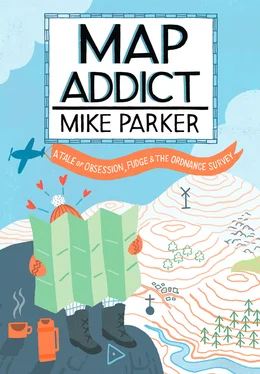
 ‘escalator link’ between Bank and Monument, it committed the unpardonable sin of kinking the hitherto ruler-straight Central Line, which used to shoot from Ealing to Mile End, right along Oxford Street, like a bright red harpoon, before veering sharply north into Essex. At least, I suppose, it’s saved generations of inquisitive twelve-year-olds from the crushing anti-climax that I experienced when, on a family trip to London, I peeled off to go and investigate the ‘escalator link’ at Bank-Monument, something that had long intrigued me on the map. Imagining some futuristic subterranean world of travelators and quite possibly a teleportation pod or two, I was cruelly disappointed to find instead a long, dank corridor and a small, clanking escalator.
‘escalator link’ between Bank and Monument, it committed the unpardonable sin of kinking the hitherto ruler-straight Central Line, which used to shoot from Ealing to Mile End, right along Oxford Street, like a bright red harpoon, before veering sharply north into Essex. At least, I suppose, it’s saved generations of inquisitive twelve-year-olds from the crushing anti-climax that I experienced when, on a family trip to London, I peeled off to go and investigate the ‘escalator link’ at Bank-Monument, something that had long intrigued me on the map. Imagining some futuristic subterranean world of travelators and quite possibly a teleportation pod or two, I was cruelly disappointed to find instead a long, dank corridor and a small, clanking escalator.
